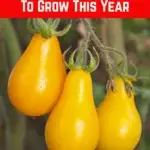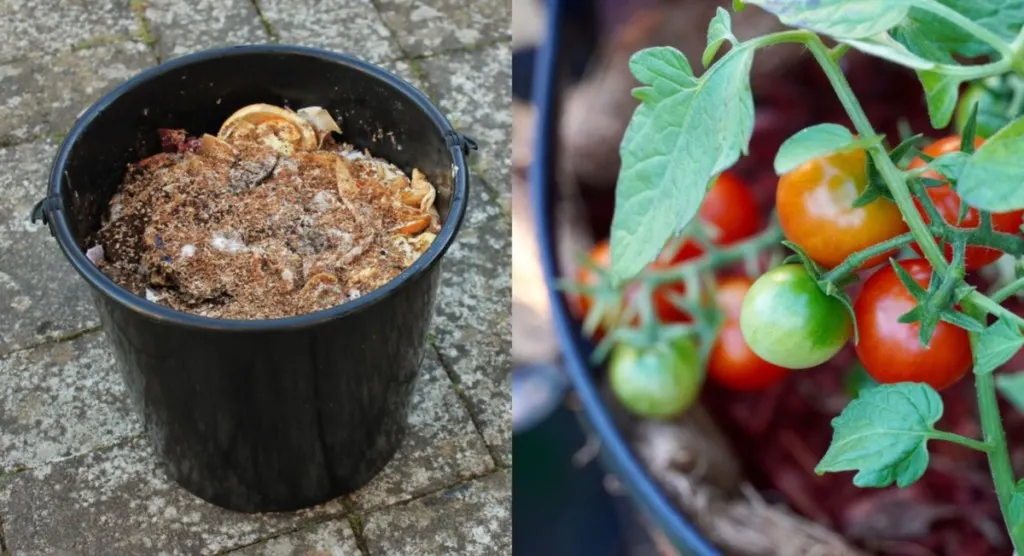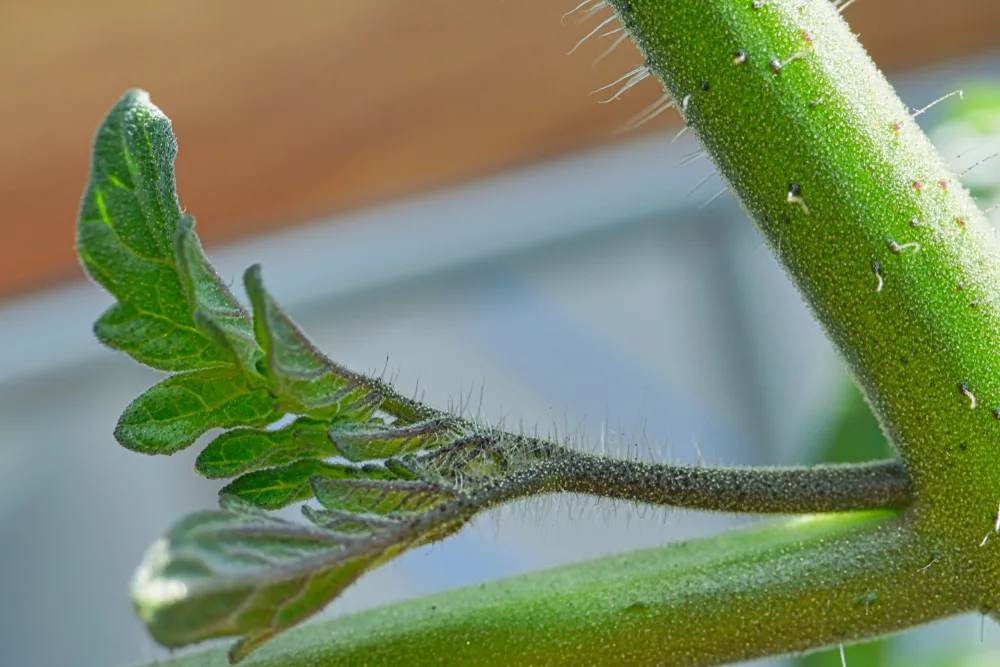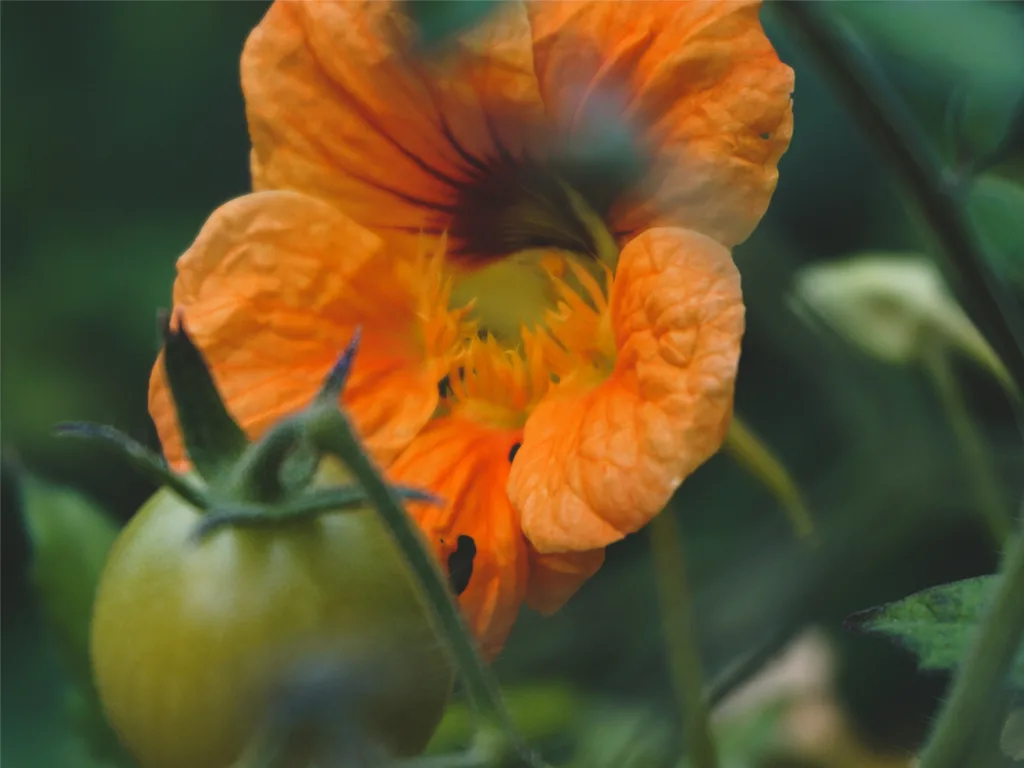
No matter what calendar month we are in, we are always pondering about the garden, whether we are dreaming about seeds, companion planting and this year’s garden layout, or getting our hands dirty in it.
Which brings us to the question: what seeds do you think about planting first in your garden?
If the answer was tomatoes, you are not alone. It is nearly every gardener’s goal to grow more tomatoes than they can consume. With plenty extra for canning, dehydrating and giving away.
Every once in a while a bumper crop happens, and it is heavenly indeed!
Though it can be even more fantastic when you plant delectable heirloom varieties, which also give you the ability to save seeds year after year.
Why plant heirloom tomatoes?
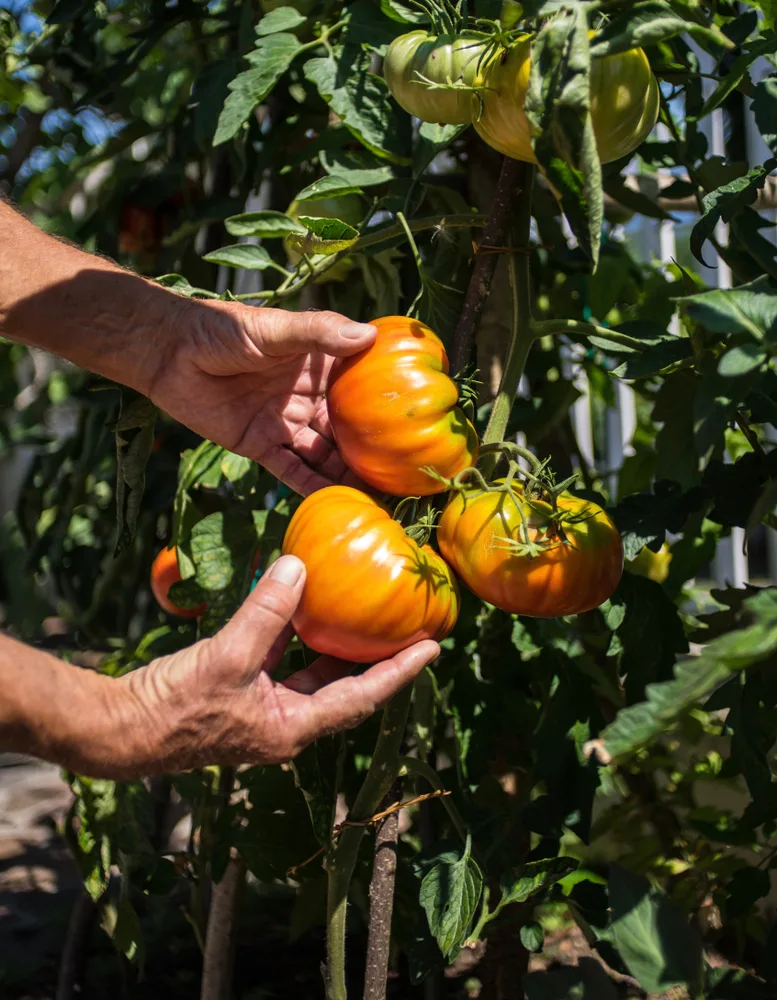
As just mentioned, the ability to save your own seeds is a small act of self-reliance and an assurance of food security, that allows us to have some control over feeding ourselves without chemicals or genetically modified crops.
Access to wholesome, nutritious vegetables, may be one of the foremost reasons to begin growing your own food, or starting to homestead, in the first place.
Heirloom tomato varieties number in the hundreds, at least on a commercial level, who knows what is out there still unknown and unlabeled?
Besides the ability to save seeds (and here’s our guide to saving tomato seeds), why should you be planting some heirloom tomatoes this year?
Flavor, flavor, flavor.
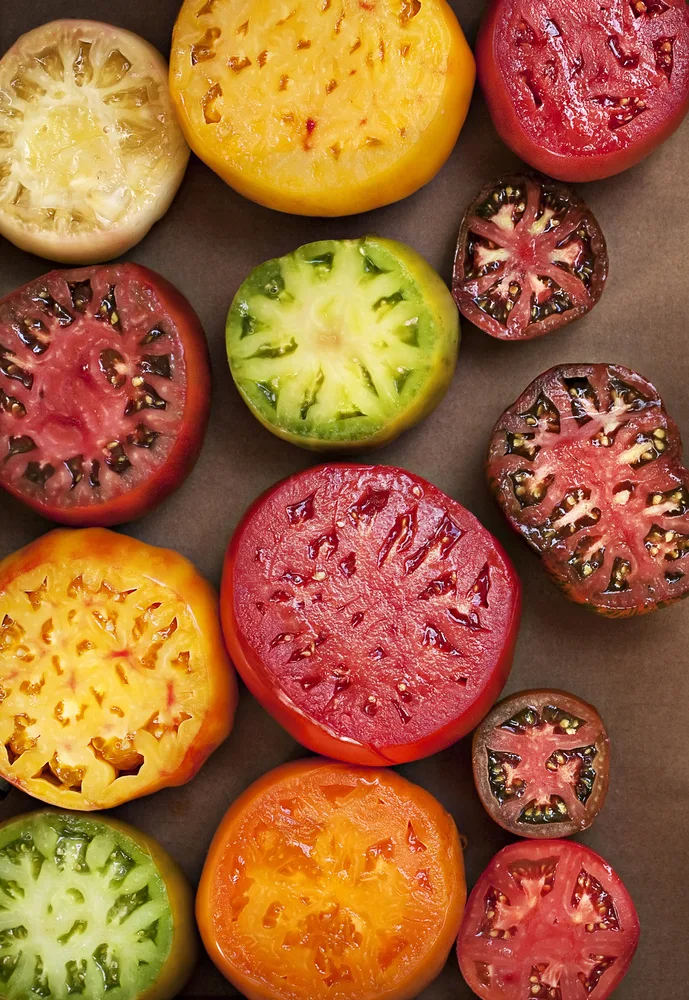
Many heirloom tomato varieties are far superior to what you can buy from the store. They are often sun-ripened, as opposed to greenhouse grown, and their texture is different. More wholesome, tempting and inviting – in a good way.
It is the case that most heirlooms are meant to be eaten shortly after being harvested, as opposed to hybrids that are created for long shelf-life.
Honor this by plucking them fresh from the vine and eating out in the garden, just as your grandparents and great-grandparents used to do.
Abundant varieties to choose from
Browse through any seed catalog and you will find heirloom tomatoes aplenty, much more than we can list here.
Heirloom tomatoes range in color from near black to a pleasing purple, with green or orange stripes. They boast a traditional tomato red, just as they are pink and yellow and bright orange. If you’d like to harvest a colorful platter, be sure to pick a few of your favorites. The first ones that catch your eye, are usually the right ones for you.
But, do keep in mind, that heirlooms come with their own “difficulties“.
They have thinner skins (part of the reason they are not often available at the grocery store) that are susceptible to cracking due to overheating in the sun, or with too much water (rain or irrigation).
Heirloom tomatoes may also need to be supported due to large fruits and sprawling vines. They may even have lower yields than modern F1 hybrids and take a few days longer to reach maturity. Yet, this is easily offset by their amazing, memorable flavor and the ability to save their seeds.
3 kinds of tomatoes you may consider planting
We all grow tomatoes for different reasons. Some of us adore ketchup, others want a bowlful of chunky chili, while the purists just want a nice, juicy slice of tomato fresh from the garden.
There isn’t an all-in-one tomato that is perfect for every situation.
However, if you know how you like to eat your tomatoes, you’ll soon find out what kind you should plant.
- paste tomatoes – for sauces
- cherries or grape tomatoes – for fresh eating and dehydrating
- slicers – for salads, chutneys and salsas
We’ve included some of each tomato-type in the list, which is by no means complete. Enjoy them one and all for their colors, flavors and textures. Then plant even more heirloom tomato varieties next year!
Here are some of the coolest, old-fashioned tomato heirloom varieties to plant this year:
1. Amana Orange (slicer)
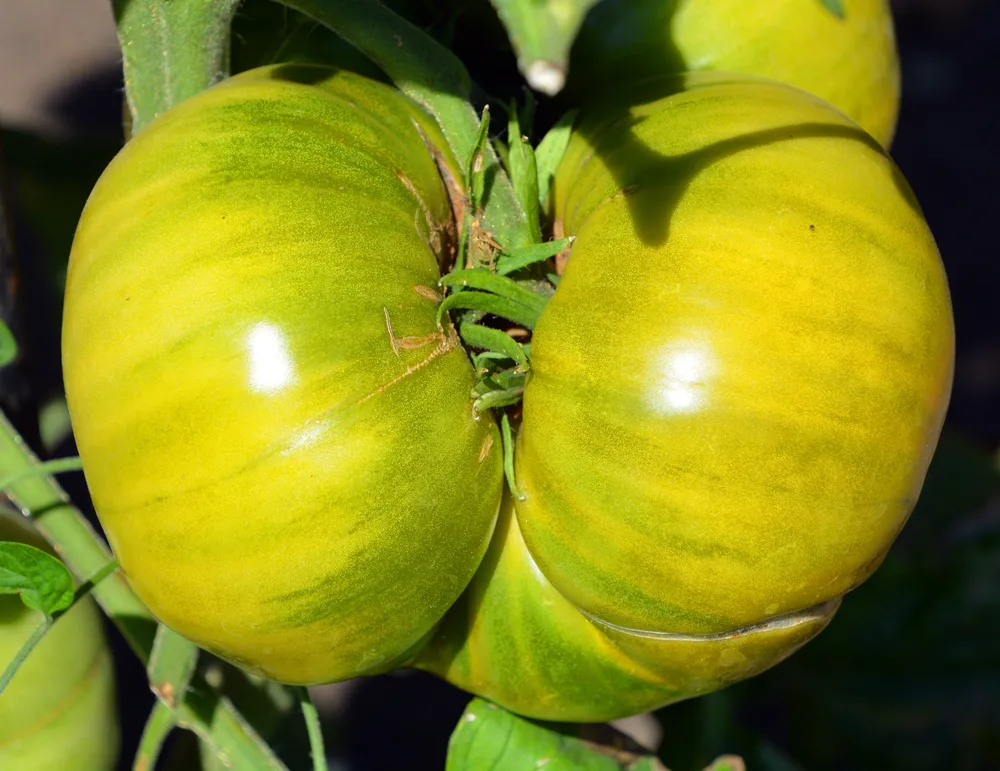
It is said that they originate from the Amana Colonies in Iowa, but most of all we appreciate them for their beautiful light-orange color and delicious orange tomato sauce that can be made from the oversize tomatoes.
A great slicer, they often grow to more than 1 pound each, and are sweeter, rather than acidic.
You’ll be overjoyed to save your tomato seeds and replant them again next year.
2. Amish Paste (paste)
When you plant Amish Paste tomatoes in your garden, you will be able to harvest one of the largest paste tomatoes that heirlooms have to offer.
It is a tomato classic!
With traditional red skin and flesh, it is a variety that has been passed down from generation to generation, originating in the 1870s – Medford, Wisconsin. Amish Paste is perfect for both fresh eating and for making the best-ever tomato sauces.
Fruits grow to 6-12 ounces and are varied in shape – one of the joys of growing heirloom varieties! As an indeterminate tomato, it will require staking.
Although it is coreless Oxheart/plum shaped variety, it also has the tendency to be seedier. If you appreciate textures in your sauces, this is one excellent variety to try. The more the merrier!
Organic Amish Paste Tomato Seeds @ Amazon
3. Black Cherry (cherry)
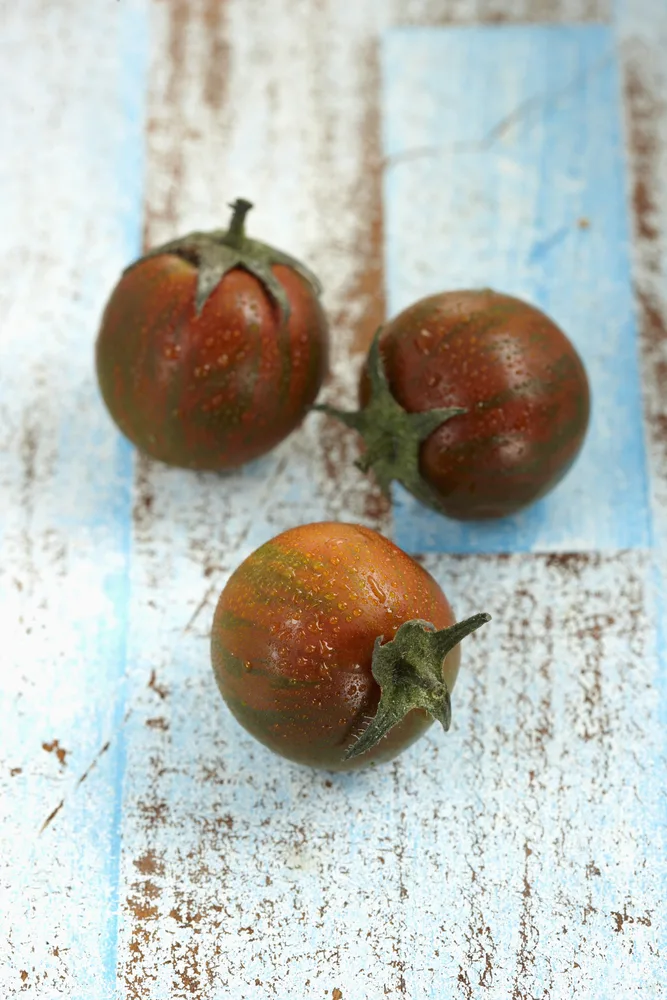
One of my personal favorites, I just adore the way the black cherries look!
Flavor-wise, they are beyond superior too, given the right growing conditions and care taken to provide them with all the nutrients they need.
I’ve read a comment online, that black cherry tomatoes “… are the number one absolute most gob-smackingly delicious tomatoes I’ve ever had…”
Let’s just say that are prolific growers with loads of little black cherries to harvest all summer long.
If you are sitting on the fence about growing these beautiful cherry tomatoes, check out this recipe about making black cherry tomato sauce.
Trust me, you must grow them and make a saucy sample for yourself:
Tomatoes, Tomatoes, Tomatoes + Black Cherry Tomato Sauce @ Soup Addict
“Burpee” Black Cherry Tomato Seeds @ Amazon
4. Black Krim (slicer/paste)
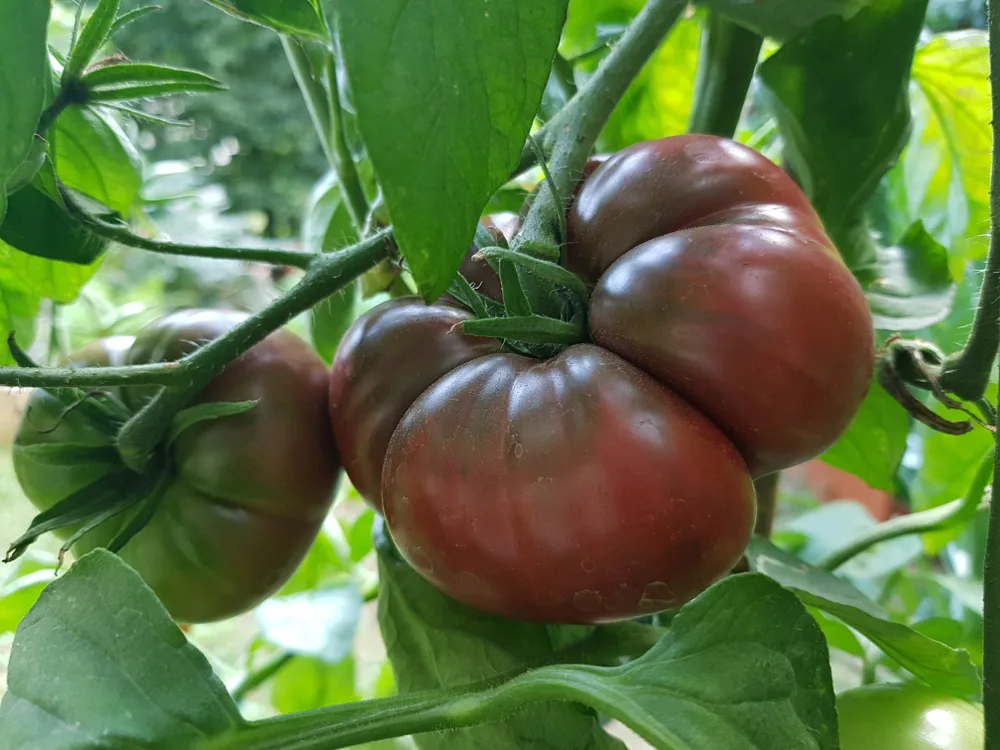
All tomato seeds carry a special genetic history with them. Black Krims are thought to originate from the Isle of Krim in the Black Sea, close to the Crimean Peninsula of Ukraine.
In the late 19th century, the seeds traveled in the pockets of soldiers returning home after the Crimean War. Later, they were spread throughout Europe and beyond.
Now you can grow them too!
Black Krims are indeterminate tomato plants, growing up to 6 feet. They will need to be supported by cages or a trellis.
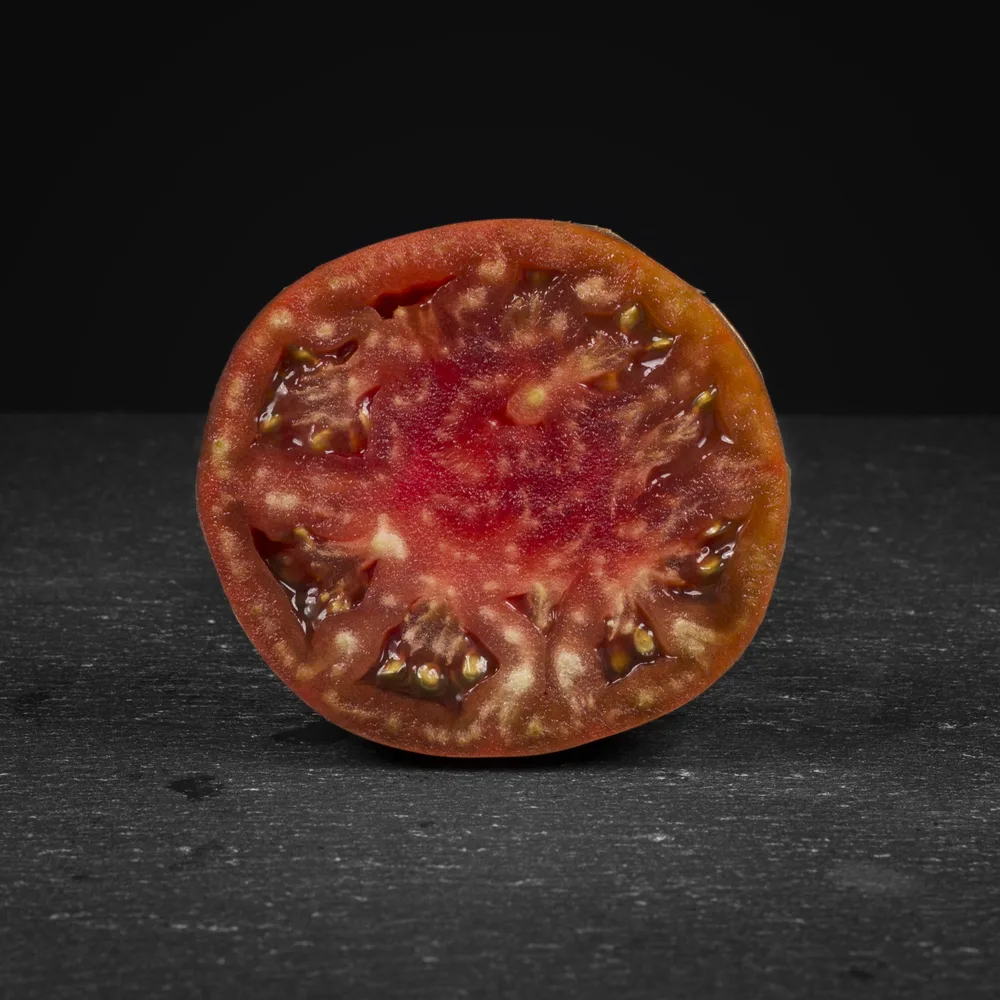
In the end, the effort will be well worth it, for the fruits are extremely colorful, juicy and exceptionally flavorful, leaving you with quite a dinner display.
Black Krim Tomato Seeds – Organic and Heirloom @ Amazon
5. Cherokee Purple (slicer/beefsteak)
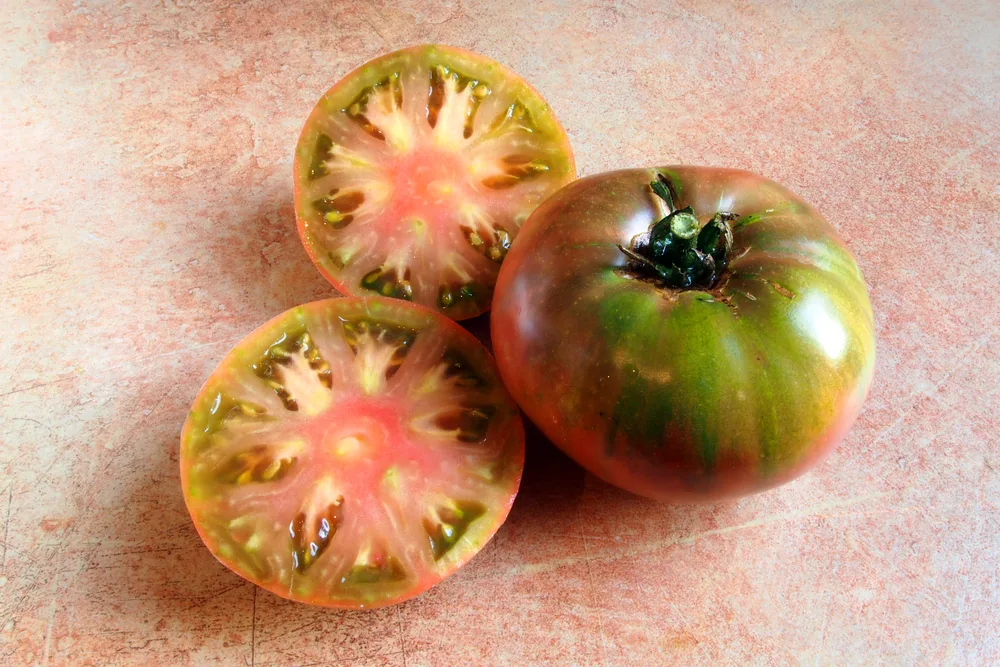
Just as all tomatoes have a genetic origin, they also have a tale to tell. Cherokee Purple is no exception. You can read the story here, of how this heirloom variety grew to fame.
Cherokee Purple is also an indeterminate vine that will grow to great lengths (8-10 feet), it will also be in need of support. Be sure to do this at the time of planting, not to disturb the roots.
Kids will love this tomato, for while it is a deep purple color on the outside, the seeds are surrounded by a “green gel”. Perfectly normal and exceedingly edible.
If you would like a chance to preserve genetic history, start with this variety. Then try your hand at growing Cherokee Chocolate and Cherokee Green for a new experience.
Cherokee Purple Heirloom Tomato Seeds @ Amazon
6. Green Giant (slicer)
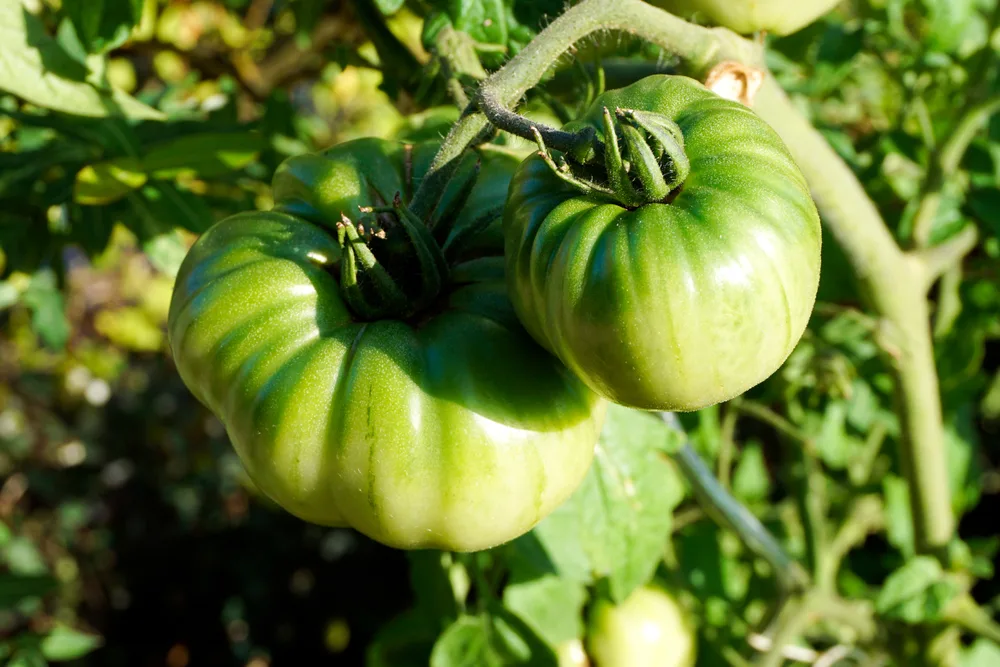
These are not the under-ripe green tomatoes that are destined to become salsa or chutney. Nor are they the best choice for using in unripe green tomato recipes.
They are, however, a gigantic green and juicy beefsteak type fruit that can weigh up to 32 ounces each!
More likely though, the tomatoes will be ready to harvest in the 12-18 oz. range.
That being said, they will require some support in the growing season. Use stakes or tomato cages to lift the leaves and the fruit off the ground, as they are an indeterminate variety.
Slice Green Giant tomatoes with precision and they are perfect for oversized burgers and BLT’s. Don’t forget about making ripe green salsa too!
Green Giant Tomato @ Baker Creek Seeds
7. Pink Brandywine (slicer/beefsteak)
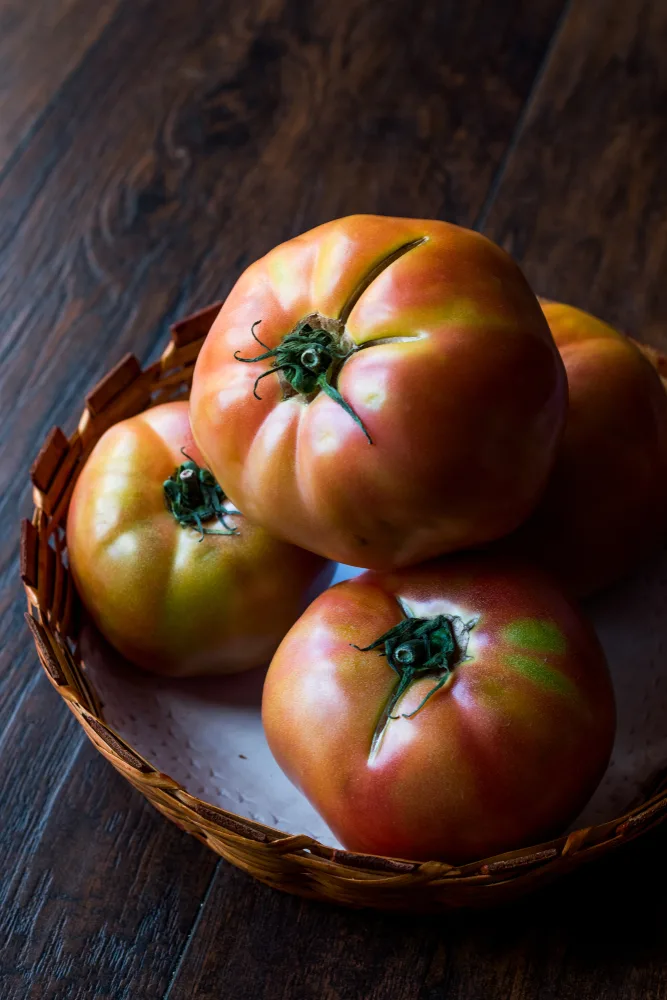
Cultivated since 1885, Pink Brandywine has been, and probably will always be, one of the all-time favorite heirlooms of backyard tomato growers.
Fruits are pink inside and out, and up to 1.5 pounds each!
Thickly sliced, they are meaty and glorious on a sandwich, or chopped up into a tomato salad next to soft cheeses and fresh garden herbs.
Sometimes you may find them at the store, at a farmers market or grown by a local CSA, but picked from the back garden is best!
Pink Brandywine Seeds from Seeds Needs @ Amazon
8. Speckled Roman (paste)
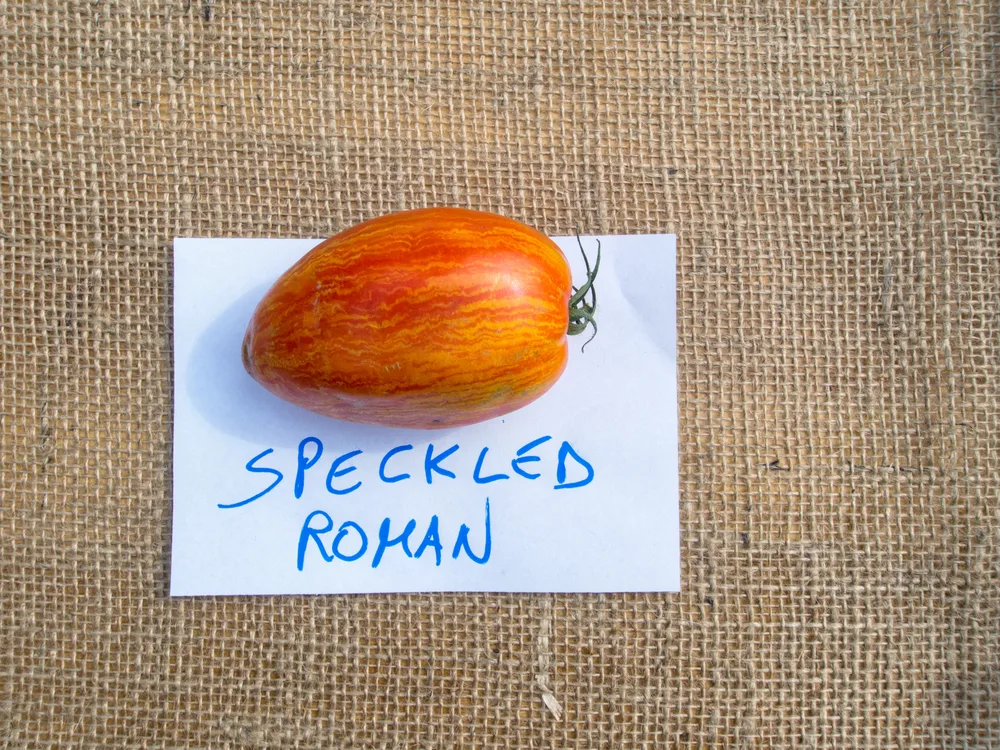
While some tomatoes are best for fresh eating, others are best for making sauce. And what is a well-stocked pantry without homemade tomato sauce?!
For this you will need a meaty tomato with few seeds and exceptional flavor. Amish Paste is a wonderful sauce tomato, as are Roma tomatoes in general, but you have to watch out for hybrids here if you are trying to avoid them in your garden, because many sauce varieties are bred to be “saucy”.
Stick with what nature has gifted us and plant some Speckled Roman tomatoes instead. If you are seeking a prolific producer, with yellow stripes, Speckled Roman it shall be!
Speckled Roman Tomato Seeds from Isla’s Garden Seeds @ Amazon
9. Yellow Oxheart (slicer)
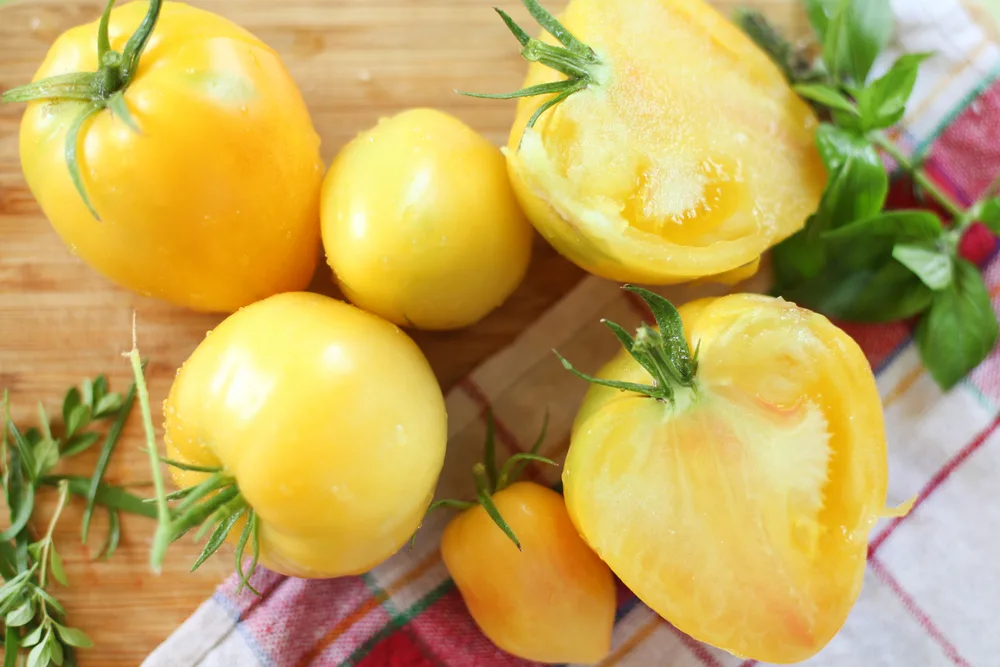
Stand back and be amazed by the size (with fruits up to 3 pounds!) and appetizing color of Yellow Oxhearts.
The large fruits are sweet, meaty and delectably juicy. This, of course, makes them your go-to choice for slicing and eating with a dash of salt, or for topping your sandwich or pizza.
While Oxhearts produce hefty fruits, their overall yield may be less than you expect. Take this as a sign that you should grow multiple heirloom varieties, for diversity in your garden harvests. Plants are indeterminate and will require staking.
10. Yellow Pear (cherry)
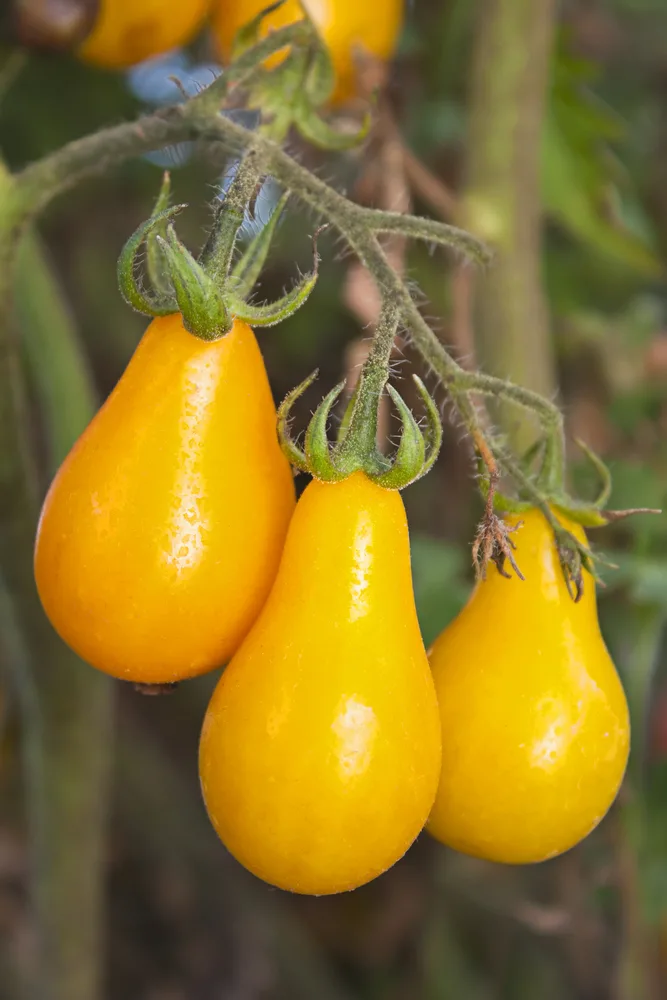
Cherry tomatoes are a treasure in any garden! Especially when they come in the shape of yellow pears.
They are not as compact as other cherry tomatoes and will require some space in your garden as they are indeterminate vines. On the upside, they produce nearly all summer long.
Every time you go out into the garden, you can grab one or two to eat of the fastest ripening ones. Soon, you’ll be able to harvest an entire bowl, presenting you with a healthy snack to go with your green onions and chives.
And when they are in full fruition, they are the perfect shape and size for dehydrating, using your oven, a dehydrator or the power of the sun.
Heirloom Yellow Pear Tomato Seeds from Harley Seeds @ Amazon
Growing tomatoes can be a hugely rewarding experience!
Not only do heirloom tomatoes add fantastic color to the garden, they taste amazing too. There are hundreds of tomato varieties to try, with flavors to entertain you all summer long – it is definitely worth planting an heirloom variety – or ten!

Take your love for tomatoes one step further and be inspired by an experienced gardener who has experimented with growing them for 35+ years. This book contains all the practical advice you need to grow and harvest the best tomatoes ever:
Epic Tomatoes: How to Select and Grow the Best Varieties of All Time by Craig LeHoullier
More Tomato Growing Tips
Growing tomatoes is one of the most popular topics on Rural Sprout. Here are some of our most popular articles.

Get the famous Rural Sprout newsletter delivered to your inbox.
Including Sunday musings from our editor, Tracey, as well as “What’s Up Wednesday” our roundup of what’s in season and new article updates and alerts.


